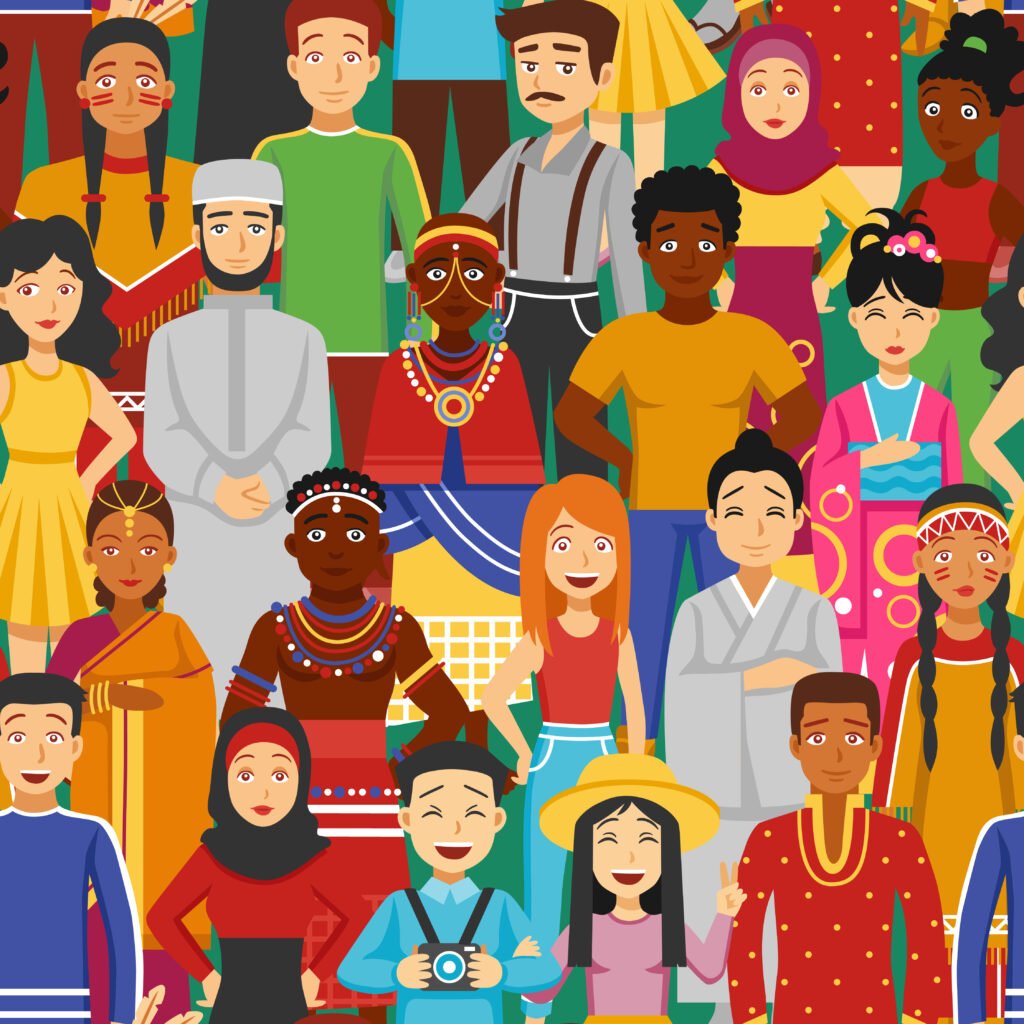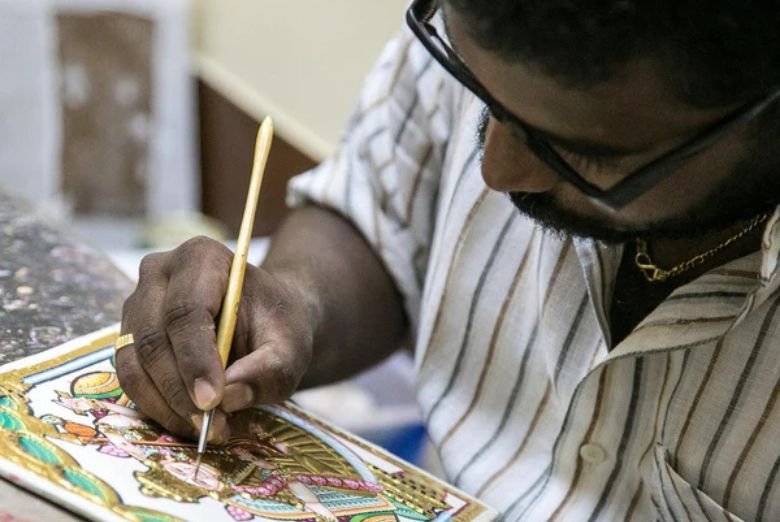Cultural diversity in art showcases the rich mosaic of values, norms, and behaviors distinct to various cultures, reflecting the unique histories, values, beliefs, and experiences of different communities . This diversity is not only a repository of the world’s collective heritage but also plays a pivotal role in fostering understanding, preserving cultural identities, and promoting social cohesion through the universal language of art . Art, encompassing visual arts, literature, music, and performance, mirrors the culture it emerges from, offering nuanced perspectives on the human condition and the diverse tapestry of global cultures .
The Importance of Cultural Diversity in Art
Cultural diversity in art not only enriches the global creative landscape but also serves as a crucial platform for amplifying underrepresented voices and celebrating the fusion of traditions.
By blending their cultural traditions, artists create hybrid forms of art that reflect unique experiences and perspectives, contributing significantly to a broader understanding of different cultures . This fusion, often referred to as ‘contamination’ of styles, allows artists to integrate their personal heritage or merge other styles based on personal taste and ability, enhancing cross-cultural appreciation .
Art serves as a universal language that transcends cultural boundaries, facilitating communication and fostering understanding between diverse groups. Engaging with various artistic expressions not only deepens empathy but also broadens one’s worldview, ultimately fueling creativity and innovation for artists .
This exposure to different artistic traditions is essential for appreciating the diversity of creative forms, which allows us to investigate cultural similarities and contrasts, underlining universal themes and feelings that unite us all .
Artistic Expressions Across Cultures
Cultural festivals and art exhibitions play a pivotal role in showcasing the diversity of artistic expressions across different cultures. These events not only celebrate the rich tapestry of global cultures but also promote understanding and appreciation among diverse audiences . The blending of artistic styles, often seen in cultural festivals, leads to what is termed as the “contamination” of styles, which can significantly increase the popularity and reach of a particular style .
For instance, the fusion of jazz with Middle Eastern or Indian music illustrates how different musical traditions can merge to create a new, enriching sound that broadens the audience’s cultural understanding . Similarly, in the visual arts, painters often borrow elements from different traditions, which leads to a rich intercultural dialogue expressed through art. This imitation and borrowing are not merely copying but rather an homage to the inspirational power of original works that resonate across cultures .
Incorporating cultural symbols into art forms like Japanese Origami, which transforms simple sheets of paper into intricate designs reflecting cultural ceremonies, showcases the depth of cultural narratives embedded in traditional crafts . These artistic expressions, whether in music, painting, or crafts, serve as a bridge connecting diverse cultures and fostering a deeper appreciation of the world’s artistic heritage.

Techniques for Representing Cultural Diversity
In the realm of cultural art, various techniques have been developed to authentically represent the diversity of global cultures. One effective approach is the realistic representation of diversity in illustrations. Illustrators are encouraged to use real-life locations as inspiration to accurately depict different cultures, thereby avoiding stereotypes and ensuring that the illustrations are based on factual information . This method not only enhances the authenticity of the artwork but also educates the audience about the true essence of the cultures portrayed.
Character design is another crucial aspect where illustrators focus on outward appearances, utilizing real photos as references. This practice ensures accurate representation of various body types, skin colors, and ages, which is essential for fostering a genuine understanding and appreciation of cultural diversity .
By capturing subtle physical differences and conducting extensive research, illustrators can fairly represent different groups of people, looking beyond broad terms to consider the visual diversity within specific ethnicities and cultures .
Overcoming Cultural Barriers through Art
Art serves as a powerful medium to bridge cultural divides, fostering a deeper understanding and appreciation across diverse communities. By exposing audiences to the art, music, and traditions of various cultures, it cultivates acceptance and tolerance, contributing to a more inclusive society . This exposure is not merely about viewing or listening but involves engaging with the narratives and histories embedded in these artistic forms, which can significantly reduce prejudices and promote unity .
Such activities allow individuals to share their unique cultural backgrounds, enhancing community cohesion and advancing cultural equity . Through these artistic engagements, communities can appreciate the richness of diversity, which prepares them for better social and economic integration .
Challenges and Best Practices in Celebrating Cultural Diversity in Art
Cultural diversity in art faces numerous challenges that threaten its vibrancy and inclusivity. Key issues include the impact of globalization, which can overshadow local cultural expressions , and the significant underfunding of educational and cultural programs, particularly those serving communities of color and low-income groups .
This financial neglect extends to a shortage of support for basic educational resources and art instruction, further exacerbated by a growing scarcity of diverse faculty in educational institutions . Additionally, societal issues such as increased racial and immigrant hostility and political polarization contribute to these challenges, creating environments where cultural diversity in art struggles to thrive .

Best Practices for Promoting Cultural Diversity in Art
To combat these challenges, several best practices have been identified to promote and celebrate cultural diversity in art effectively. Engaging diverse community stakeholders in discussions about cultural equity can illuminate the benefits and necessity of inclusive practices .
Developing targeted policies to eliminate funding inequities is crucial, as is increasing operational support for community-based art groups that serve marginalized populations . In the broader scope of arts advocacy, diverse artists are organizing outside traditional spaces to address historical inequities and push for transformative public funding policies .
Integrating Diversity into Arts Education and Funding
A focus on diversifying faculties and curricula to reflect demographic changes is essential for fostering an inclusive educational environment that respects and promotes cultural diversity .
Additionally, the future of philanthropy in the arts sector is moving towards fostering deeper, community-driven donor relationships, emphasizing the importance of ‘art and something else’—a concept that aligns donors’ interests with broader social impacts .
This approach not only enriches the artistic landscape but also strengthens the social fabric by making arts a pivotal part of community engagement and development.
The Future of Cultural Diversity in the Arts
Cultural diversity in the arts, akin to biodiversity, enhances innovation and creativity, particularly noted in the international legal frameworks that support these sectors . As the world becomes increasingly interconnected, factors such as migration and a global dialogue about cultural differences continue to shape the landscape of cultural arts . This evolving scenario is supported by the significant economic impact of the Creative and Cultural Industries (CCI), which generate approximately US$2.2 billion annually and contribute to 3% of the global GDP, employing nearly 30 million people worldwide .
The advent of digital technology plays a pivotal role in the future of cultural arts. The COVID-19 pandemic accelerated the shift towards virtual arts events, making art exhibitions, fairs, and auctions more accessible through online platforms . Thttps://www.insidephilanthropy.com/home/2022/6/8/six-trends-in-arts-and-culture-for-funders-to-watchhis digital transition is not temporary; the integration of digital tools in creative processes is becoming central, with funders encouraged to support new channels for resource allocation and training . The “phygital” space—blending physical and digital experiences—emerges as a new frontier, prompting operational improvements and innovative engagement strategies in the arts .
Conclusion
Throughout the exploration of cultural diversity in art, we’ve journeyed across the myriad ways art serves as a mirror to the rich and complex mosaic of global cultures. From showcasing the nuanced expressions and traditions of different communities to fostering an environment of understanding and empathy, art plays a crucial role in bridging gaps and enhancing social cohesion.
As we look towards the horizon of cultural arts, the amalgamation of technological advancement with traditional forms presents an evolving landscape ripe with opportunities for broader access and engagement. The challenges faced, such as globalization and underfunding, necessitate a collective effort to support and promote diversity within the art world. By embracing these practices and striving for inclusivity, we are not just preserving cultural heritage but actively participating in the creation of a more connected and culturally rich world.
FAQs
1. What does cultural diversity mean in the context of art?
Cultural diversity in art refers to inclusive arts programming and intercultural arts practices that involve artists and communities from various national, ethnic, or cultural groups, as recognized by the Arts Council.
2. How can artistic expressions teach us about different cultures?
Artistic expressions often reflect and uphold the objects, ideas, and customs valued by a society. By examining artworks and artifacts from various cultures, we can gain insights into the aesthetics and traditions valued by those cultures, which can also prompt us to reflect on our own cultural values and artifacts.
3. Why is it important to include diverse cultures in arts and creativity?
Incorporating diverse cultures in the arts plays a crucial role in promoting cultural diversity. Art serves as a universal language that transcends linguistic barriers, representing cultural identities, historical events, and shared human experiences, thereby enhancing mutual understanding and respect.
4. What role does art play in promoting cultural diversity and understanding?
Art promotes cultural diversity and understanding by fostering a sense of belonging, bridging differences, and providing a medium for expression. By contributing to social cohesion, art helps to unite and foster understanding among diverse societies.




What an insightful exploration of the rich tapestry of cultural art! I love how you highlighted the diverse influences that shape artistic expression around the world. It’s so important to appreciate and understand these differences in our increasingly globalized society. Looking forward to more posts like this!
This post beautifully captures the essence of cultural art and its significance in uniting diverse perspectives. I loved how you highlighted specific examples from different cultures, making the journey feel personal and relatable. It’s a reminder of the rich tapestry that artistic expression weaves across the globe. Thank you for this enlightening read!
Pingback: Opinion: Civic Engagement Through Art is What Will Lift Us Up | Journalism 2.0
Pingback: The Impact of Art on Society
Pingback: The Role of Digital Art in Modern Design